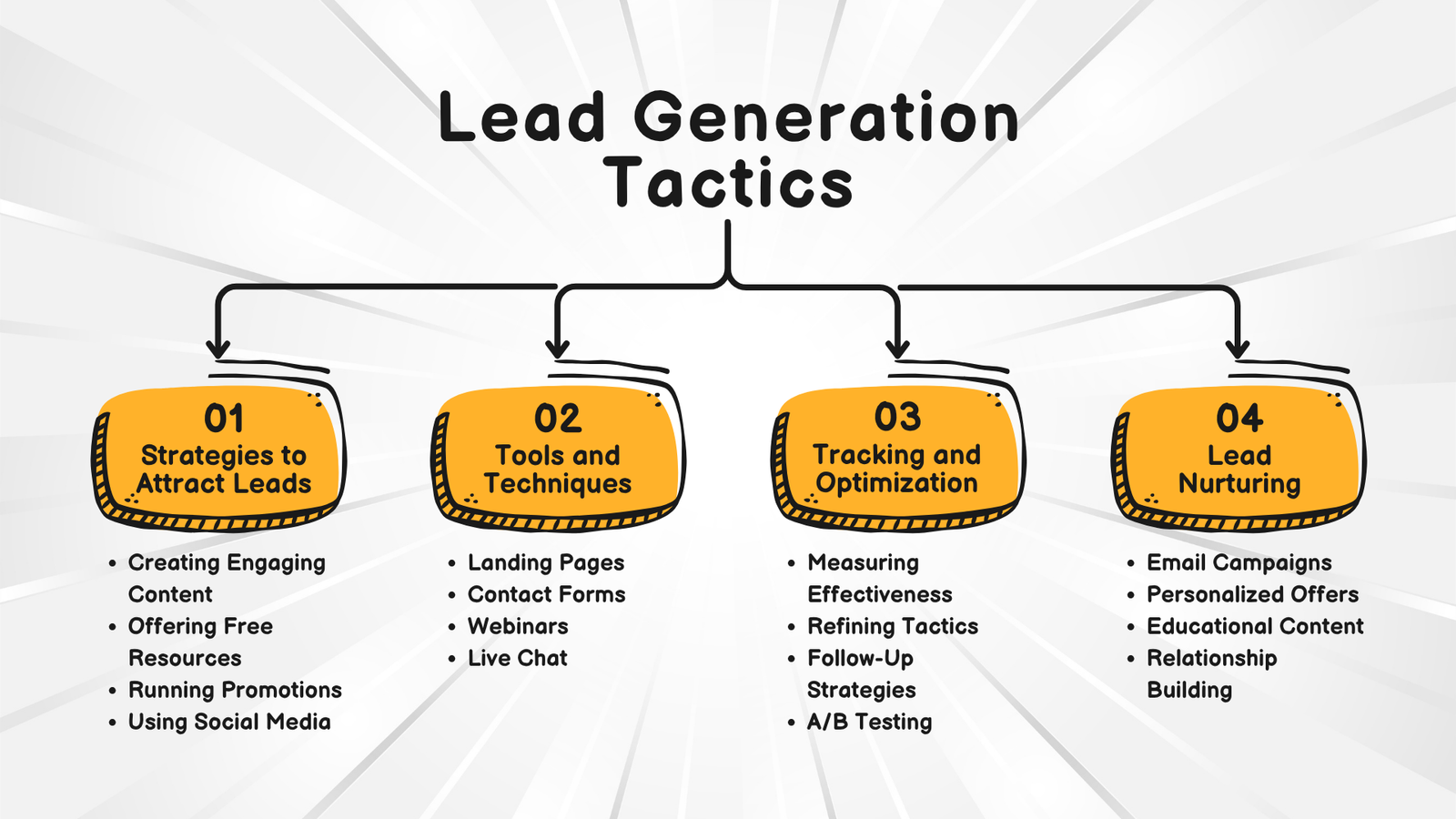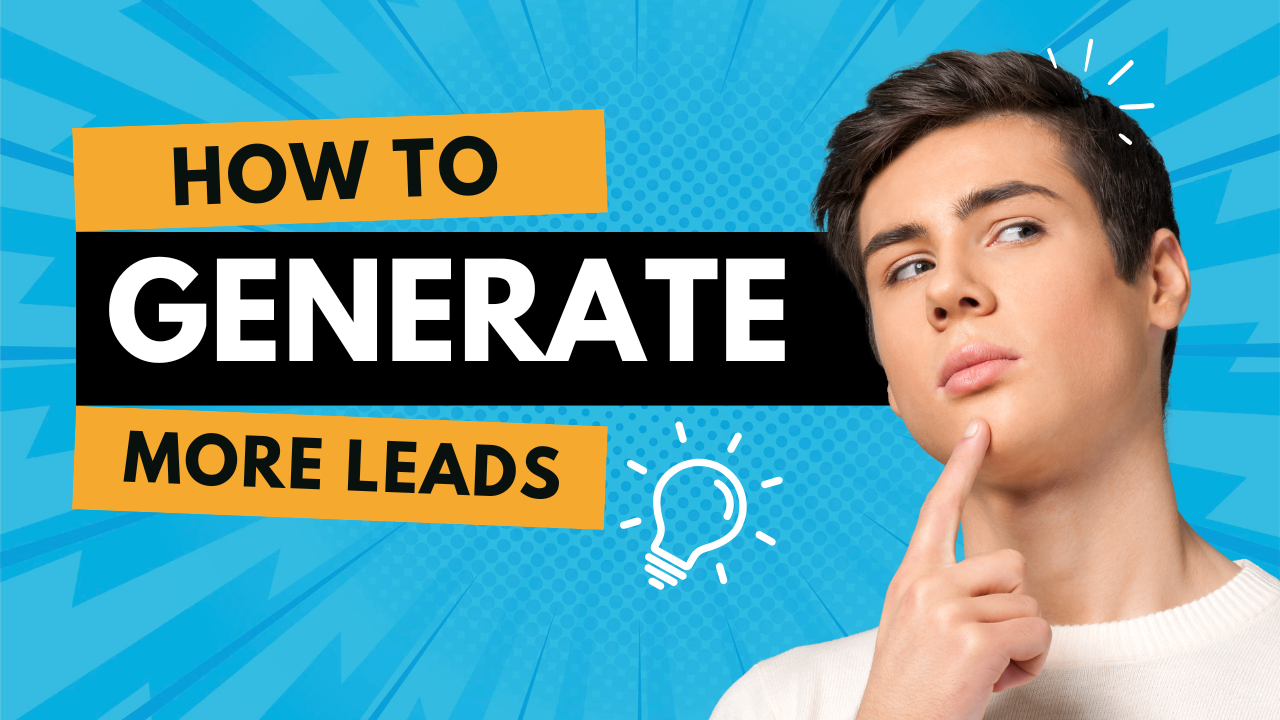What is Lead Generation?
Lead generation is the process of attracting and capturing interest in a product or service with the ultimate goal of converting that interest into a sale. In the digital world, this often involves collecting a visitor’s contact details—such as their name, email, or phone number—through a strategically placed web form.
Especially for B2B companies, where buying decisions are complex and sales cycles are longer, lead generation becomes a vital part of the sales funnel. Instead of pushing for an immediate sale, lead generation companies like Gracewell Technology focus on building relationships by nurturing leads via email campaigns, value-driven content, and personalized follow-ups.
How Lead Generation Works
For your lead generation efforts to be successful, you need to master two core components:
- Driving high-quality traffic to your website
- Converting that traffic into actionable leads
Let’s explore how you can achieve both.
Drive Targeted Traffic
To begin with, getting people to your site is crucial. Here are some proven strategies:
- Search Engine Optimization (SEO): Enhance your site to rank higher in Google search for terms like lead generation company, lead generation services, or B2B lead providers.
- Search Engine Marketing (SEM): Invest in paid ads on search engines such as Google Ads to instantly drive traffic.
- Social Media Marketing: Promote your content organically or through paid ads on platforms like Facebook, LinkedIn, and Instagram.
- Display Advertising: Reach broader audiences with banner, text, or video ads displayed across the web.
- Offline Events: Attend or host events like trade shows and networking meetups to drive offline traffic online.
Capture and Convert Visitors
Once you’ve driven traffic, the next step is to convert visitors into leads by encouraging them to share their contact details. Here are effective methods:
- Lead Magnets: Offer high-value resources—like eBooks, whitepapers, or exclusive templates—in exchange for contact info.
- Landing Pages: Direct traffic to focused, conversion-optimized pages with persuasive copy and CTAs.
- Webinars: Host live or on-demand sessions that educate users and build trust.
- Interactive Tools: Use ROI calculators, assessments, or quizzes that provide value while capturing leads.

How to Improve Your Lead Generation?
Improving your lead generation is not a one-time task. Rather, it’s an ongoing process that involves analyzing data, refining your strategy, and optimizing every touchpoint.
Here’s how to do it:
- Define Your Buyer Persona: Start by understanding who your target audience is and tailor your content to solve their specific pain points.
- Experiment with Lead Magnets: Test multiple formats such as case studies, videos, or checklists to discover what resonates most.
- Optimize Your Forms: Reduce the number of fields to lower friction. The fewer barriers, the more leads you’ll capture.
- Refine Your Landing Pages: Use attention-grabbing headlines, benefit-focused copy, and trust signals like testimonials.
Additionally, lead generation companies like Gracewell Technology leverage advanced analytics and heatmaps to see exactly how users interact with landing pages. This data-driven approach uncovers opportunities to fine-tune conversion paths, resulting in better performance and more qualified leads.
Need high-converting leads to scale your business?
How to Use A/B Testing to Improve Lead Generation
Guesswork has no place in modern lead generation. Instead, A/B testing empowers marketers to make informed decisions by experimenting with different variations of webpages, forms, and calls-to-action.
This testing process reveals what truly resonates with users and drives better conversion rates. For example, you can test short versus long lead forms to see which one results in more submissions, or you might compare different CTA button texts such as “Start My Free Trial” versus “Get Instant Access.” Additionally, experimenting with various types of lead magnets or tweaking headlines and images on landing pages can yield significant insights into user behavior. By using powerful tools like Google Optimize, VWO, or Optimizely, businesses can implement these tests in real-time and gather actionable data to enhance their lead generation performance with confidence.
Inbound vs. Outbound Lead Generation Strategies
Understanding the strengths and applications of both inbound and outbound lead generation helps businesses create a well-rounded marketing strategy. Here’s a breakdown of the two:
Inbound Lead Generation:
Content-Driven Approach: Attracts prospects through valuable and informative content such as blog posts, ebooks, guides, and videos.
SEO Optimization: Uses keywords like lead generation company to rank higher on search engines and draw in organic traffic.
Social Media Engagement: Builds relationships and credibility through consistent posting and interaction on platforms like LinkedIn, Facebook, and Instagram.
Webinars & Email Campaigns: Educates and nurtures leads over time through automated email sequences and interactive learning sessions.
Cost-Effective Over Time: Requires an initial investment in content creation but yields long-term results with compounding visibility.
Outbound Lead Generation:
Proactive Outreach: Directly reaches out to potential customers via cold calling, cold emailing, and direct messages.
Paid Advertising: Uses PPC, display ads, and sponsored posts to place your offer in front of targeted audiences quickly.
Sales Teams & Telemarketing: Involves personal outreach by SDRs (Sales Development Representatives) to qualify leads rapidly.
Faster Lead Acquisition: Ideal for companies looking to generate leads quickly or target specific high-value clients.
Requires Higher Budget: Often involves higher upfront costs and more active manpower.
A balanced lead generation strategy combines both methods. Lead generation companies like Gracewell Technology design custom approaches that integrate inbound and outbound strategies to maximize reach, engagement, and conversion.
What Is a B2B Lead?
A B2B lead refers to an individual within a business who shows potential interest in your company’s products or services. These leads are typically key decision-makers or influencers in organizations that match your Ideal Customer Profile (ICP).
Main Types of B2B Leads
To streamline your lead generation strategy, it’s crucial to understand and segment your leads based on their intent and engagement level. Here are the primary types of B2B leads:
- Marketing Qualified Leads (MQLs) : MQLs are prospects who have interacted with your brand through various marketing channels. They may have downloaded gated content, subscribed to your newsletter, or attended a webinar. While they are not ready to buy yet, their engagement signals a genuine interest—making them ideal candidates for warm lead nurturing.
- Sales Qualified Leads (SQLs) :SQLs have moved further down the sales funnel. These leads have demonstrated clear buying intent and are already in active conversations with your sales team. They are highly engaged and are being worked on by sales reps aiming to close the deal.
- Cold Leads : Cold leads are contacts that match your ICP but have not yet engaged with your brand. They are typically reached through cold calling, targeted LinkedIn messaging, or outbound email campaigns. While cold, these leads represent untapped potential and can be warmed up through consistent and strategic outreach.
FAQ : FREQUENTLY ASKED QUESTIONS ABOUT LEAD GENERATION
Lead generation is crucial because it fills your sales pipeline with potential customers. Without a steady stream of qualified leads, it's difficult for businesses to grow revenue. A professional lead generation company like Gracewell Technology helps you generate high-quality leads consistently.
Lead generation sits at the intersection of sales and marketing. While marketing teams typically attract and qualify leads through content, SEO, ads, and outreach, sales teams engage with qualified leads to close deals. Successful lead generation requires collaboration between both departments.
Lead nurturing is the process of building relationships with prospects at every stage of the sales funnel. It involves providing relevant, timely content and follow-up communications—such as emails, calls, and webinars—to educate and guide leads until they’re ready to make a purchase.
Yes, Gracewell Technology offers customized sales training programs as part of its lead generation services. Our training focuses on lead handling, consultative selling, outbound prospecting, and closing strategies—empowering your sales team to convert more leads into loyal customers.
Conclusion
Lead generation is essential for driving business growth in today’s digital world. Whether through inbound content or outbound outreach, attracting the right leads is key to boosting conversions and ROI.
If you’re ready to scale your sales and fill your pipeline with high-quality leads, Gracewell Technology is your trusted partner for results that go beyond clicks and impressions—we deliver real, measurable growth.
Author: Gracewell



